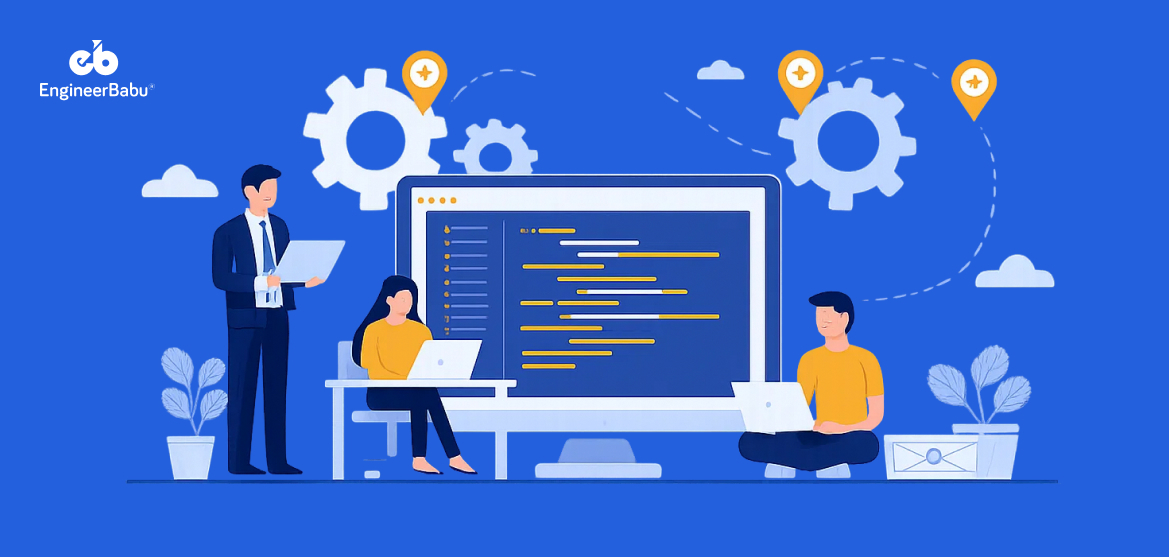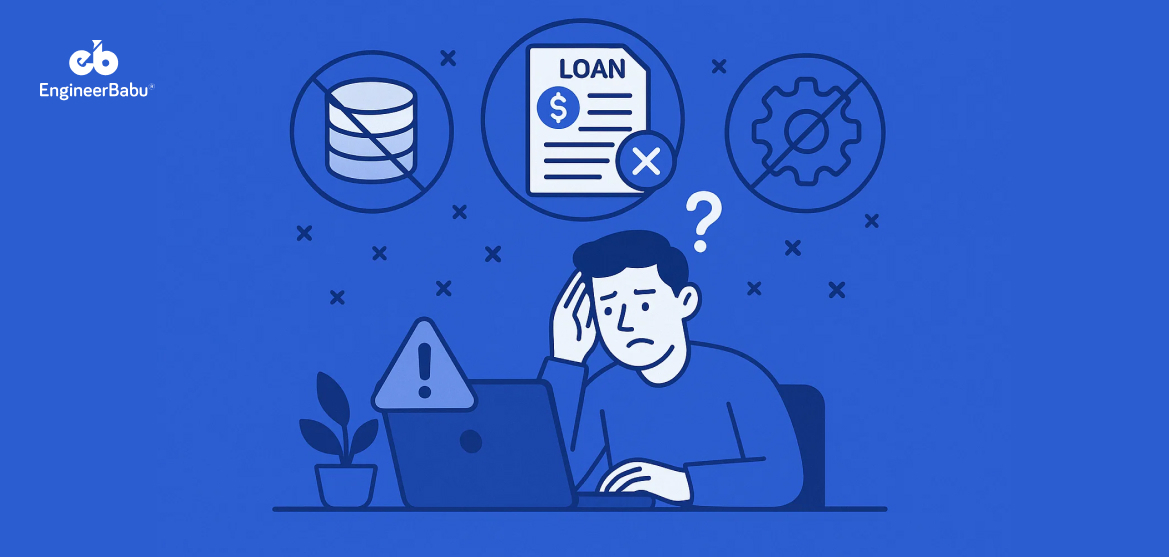Building a loan lending app can cost anywhere from $20,000 to over $200,000, depending on the features, technology stack, and complexity involved. Loan lending app development involves careful planning around compliance, security, user experience, and integration with financial systems, all of which influence the final price. Some advanced features are essential to meet compliance and user expectations, while others are nice-to-have add-ons.
The reason so many companies are investing in these apps is clear. Traditional loan processes, weighed down by paperwork and long approval times, are rapidly being replaced by digital platforms. A loan app provides a streamlined digital solution, allowing users to apply for a loan, get verified, and receive funds directly on their phone.
This shift isn’t small. In 2022, the global digital lending platform market already exceeded USD 8.5 billion, and it’s expected to grow at a compound annual growth rate of over 20 percent through 2032. (Global Market Insights, Inc) The number of app users is projected to exceed 200 million by 2025, further accelerating the adoption and impact of digital lending solutions.
That kind of expansion shows investors, startups, banks, and fintech companies are chasing loan lending apps as one of the most promising opportunities in financial services.
So, if you’re wondering what the cost to build a loan lending app is, you’re asking the right question at the right time. Understanding the overall app development cost is crucial for effective budgeting and decision-making. Now, let’s break down exactly what goes into that cost and how to get it right.
Introduction to Lending Apps
Lending apps have transformed the way both individuals and businesses access credit, making the loan application process faster, more transparent, and user-friendly. With just a few taps, users can submit a loan application, upload necessary documents, and receive approval—all without visiting a bank branch. This digital-first approach has fueled a surge in demand for loan lending solutions, with the global digital lending market expected to reach $39.8 billion by 2033.
For financial institutions and fintech companies, investing in lending app development is no longer optional—it’s essential for staying competitive. Modern lending apps offer a host of advantages, including rapid loan approvals, reduced paperwork, and flexible repayment options tailored to user needs. As a result, businesses are leveraging app development to streamline their loan lending operations, improve customer experience, and expand their reach in a rapidly evolving market.
Whether you’re a bank, a fintech startup, or an established lender, embracing digital lending through a robust lending app can help you attract new customers, speed up the loan application process, and deliver the convenience today’s borrowers expect.
Key Factors That Influence the Cost to Build a Loan Lending App
The cost of building a loan lending app depends on more than just hiring a development team. Every decision, from the features you prioritize to the level of security you implement, adds to or reduces the overall budget. Here are the main factors that shape the cost: Multiple factors—such as technology stack, UI/UX design, and integration requirements—combine to determine the final investment. Cost estimation is a crucial step in planning and budgeting for a loan lending app, helping you avoid unexpected expenses and make informed decisions. App complexity, including advanced features like AI, multi-currency support, and real-time analytics, is a key driver of cost. Understanding all these influencing elements is essential for accurately assessing app development costs.
1. Features and Functionality
The biggest cost driver is the set of features you choose to include. A simple MVP development with loan application forms, user onboarding, and payment tracking will cost far less than an app with AI-driven credit scoring, peer-to-peer lending, or real-time fraud detection.
- Basic features such as sign-up, profile management, loan requests, repayment schedules, and a loan calculator for user convenience are essential for a working product.
- Advanced features like automated KYC, in-app chat, analytics dashboards, and credit score checks for borrower assessment add significant value but also require extra time and development effort.
- Specialized features such as AI-based decision-making, blockchain integrations, and comprehensive loan management for tracking and optimizing loan portfolios can be highly beneficial but will substantially increase the budget.
2. Design (UI/UX)
The design of your app is not just about looks. A clear and intuitive interface can make the loan application process faster and easier for users.
- A simple design with standard templates is more affordable.
- Custom UI/UX design service that includes branded visuals, animations, and carefully designed user flows requires more time, which increases the cost.
3. Platform Choice
Where you plan to launch your app plays a key role in cost.
- Android or iOS only: Building for a single platform keeps development costs lower. Leverage complete mobile app development services for this.
- Cross-platform development: Using frameworks like Flutter or React Native can save time and money if you want to launch on both platforms at once.
- Native apps for both platforms: This option ensures better performance but nearly doubles the development hours, raising the overall cost.
- Web app: Building a web app allows users to access lending services directly through their browsers. This platform is ideal for user-friendly onboarding, seamless integration with bank accounts, and delivering personalized loan offers within the web app interface.
4. Third-Party Integrations
A loan lending app often requires several integrations to function smoothly.
- Multiple payment gateways like Razorpay, PayPal, or Stripe enable secure and flexible loan disbursements and repayments.
- Fraud detection systems are integrated to enhance security and prevent fraudulent activities during financial transactions.
- KYC and identity verification services help comply with regulations and reduce fraud.
- Credit scoring APIs connect to financial databases to assess borrower eligibility.
Each integration comes with setup time, customization, and sometimes licensing costs, all of which impact the final budget.
5. Security and Compliance
Financial apps handle sensitive user data and must comply with strict regulations and regulatory compliance requirements. Meeting these requirements adds to the cost but cannot be skipped.
- Data encryption and secure authentication methods such as two-factor login are standard measures to protect user data.
- Compliance with regulations like GDPR, PCI DSS, local lending laws, and other local financial laws requires additional work from developers and legal consultants.
- Regular security audits and penetration testing also add to ongoing expenses.
6. Development Team Location and Expertise
The hourly rate of developers varies significantly by region.
- In the US and Europe, fintech app development can cost $100–$200 per hour.
- In India, experienced fintech developers may charge $30–$60 per hour for the same quality of work.
Hiring app developers from different regions can greatly impact your overall loan lending app development cost and quality. Outsourcing app developers from regions like Asia or Eastern Europe is a strategic way to optimize your budget without sacrificing expertise.
The expertise of the team also matters. A seasoned fintech developer will cost more but may deliver a more secure, compliant, and scalable app.
7. Maintenance and Post-Launch Support
The cost of development does not end with launch.
- Regular updates to keep up with operating system changes
- Security patches to address new threats
- Server hosting and cloud storage fees
- New features based on user feedback
These ongoing costs usually range from 15 to 20 percent of the initial development cost per year.
App Development Process
Building a successful loan lending app requires a well-structured app development process, guided by a skilled development team with fintech expertise. The journey typically begins with thorough planning—defining your target audience, regulatory requirements, and the key features your lending app must offer, such as user registration, loan application workflows, and repayment tracking.
Once the requirements are clear, the design phase focuses on creating an intuitive user experience that simplifies the loan application and approval process. The development team then selects the appropriate technology stack, choosing programming languages, frameworks, and databases that align with your app’s scalability and security needs. This choice directly impacts the lending app development cost and long-term maintainability.
During development, integrating third-party services is crucial. Payment gateways enable secure transactions, while credit scoring APIs help automate borrower assessments. These third-party integrations, along with features like real-time notifications and advanced analytics, add value but also influence the overall cost and complexity of the project.
Rigorous testing ensures the app is reliable, secure, and compliant with financial regulations. Finally, the deployment phase brings your loan lending app to market, followed by ongoing updates and support to address user feedback and evolving compliance standards.
Choosing a development team with a proven track record in fintech app development is essential. Their expertise in lending app development, understanding of sensitive user data, and familiarity with industry best practices will help you build a secure, feature-rich app that meets both business goals and user expectations—while keeping your overall app development budget in check.
Development Cost Breakdown to Build a Loan Lending App
The loan lending app development process involves several stages, each impacting the overall cost. When discussing loan app development cost, it’s important to break down the expenses into clear tiers for better understanding. This breakdown helps clarify what goes into each phase of loan lending app development and what businesses can expect at each investment level.
The cost to build a loan lending app can be better understood when broken down into tiers. Each tier reflects the level of features, complexity, and development hours required. Money lending app development follows a similar tiered approach, with cost considerations depending on the scope and integrations needed. Here’s what to expect:
MVP (Minimum Viable Product)
An MVP is the fastest way to test your idea in the market. It focuses on essential features that let users apply for a loan, get approved, and make repayments.
Core features usually include:
- User registration and login
- Basic KYC verification
- Loan application form
- Simple credit eligibility check
- Loan disbursement and repayment tracking
- Notifications for due dates
For example, MVPs can be built for various types of loan apps such as student loan apps (for managing and repaying educational loans), personal loan apps (for individual financial needs), payday loan apps (for short-term, quick cash advances), auto loan apps (for vehicle financing), business loan apps (for SME financing), and mortgage loan apps (for home mortgage management). Each MVP focuses on the core loan lending services relevant to its target users.
Cost range: $20,000 – $60,000 (~₹16 – 50 lakhs)
Timeline: 1-2 months
Why choose this: If you want to validate your idea quickly, launch core loan lending services, and avoid overspending in the early stages.
Mid-Level Loan Lending App
This tier offers a more polished experience with additional features that improve user engagement and compliance.
Common features include:
- All MVP features
- Advanced KYC integration (automated checks with third-party services)
- In-app chat or support system
- Admin dashboard for managing borrowers and lenders
- Payment gateway integration with multiple options
- Analytics and reporting tools for admins
- Integration with investment platforms to expand service offerings and diversify financial products
- Support for multiple monetization strategies, such as transaction fees, interest, and value-added services, to maximize revenue opportunities
Cost range: $60,000 – $150,000 (~₹50 lakhs – ₹1.2 crore)
Timeline: 2–4 months
Why choose this: If you’re building a scalable product for a broader audience or working with banks and NBFCs that demand compliance and data security.
Enterprise-Grade App
An enterprise-level loan lending app is designed for financial institutions, large fintech startups, or global operations. It requires complex architecture, top-level security, and cutting-edge features.
Advanced features usually include:
- All MVP and mid-level features
- AI-based credit scoring and fraud detection
- Multi-role access (borrowers, lenders, admins, agents)
- Real-time analytics dashboards
- Integration with multiple banking systems
- Peer-to-peer lending or investment marketplace
- Blockchain for transparent transactions (optional)
- Budgeting tools for users, enabling targeted financial advertisements and new revenue streams
- Careful selection of the tech stack to ensure scalability, performance, security, and seamless integration with AI/ML and other advanced technologies
Cost range: $150,000 – $400,000+ (~₹1.2 – 3+ crore)
Timeline: 4-6+ months
Why choose this: If you want a fully-featured fintech platform that can compete with established digital lenders.
Quick Comparison Table
App Type | Features | Timeline | Cost (USD) | Cost (INR) |
MVP | Basic KYC, loan application, repayments | 1 – 2 months | $20,000–$60,000 | ₹16–50 lakhs |
Mid-Level | Advanced KYC, dashboards, analytics, chat | 2 – 4 months | $60,000–$150,000 | ₹50 lakhs–₹1.2 cr |
Enterprise-Grade | AI, fraud detection, multi-role access | 4 – 6+ months | $150,000–$400,000+ | ₹1.2–3+ cr |
Knowing how long it takes to build your app is just as important as understanding the budget. The development timeline depends on the scope of features, complexity, and team size. Here’s a breakdown of what you can expect:
MVP (Minimum Viable Product)
An MVP with core features like registration, loan applications, KYC, and repayment tracking usually takes 8 to 12 weeks. This is the fastest way to test the market and get user feedback before investing more.
Mid-Level App
Once you add advanced KYC, payment gateways, dashboards, and analytics, the timeline stretches to 16 to 24 weeks. This phase involves more design work, API integrations, and thorough testing.
Enterprise-Grade App
For a fully scalable loan lending platform with AI-based credit scoring, fraud detection, and multi-role access, expect 6 to 9+ months of development. Complex compliance requirements, high security standards, and large-scale integrations add significant time here.
Why Timelines Matter
Rushing development can compromise security, which is critical in financial apps. On the other hand, delaying too much can mean missing out on market opportunities. By balancing your feature list with a realistic timeline, you can control both the cost to build a loan lending app and the speed at which you enter the market.
Conclusion
The cost to build a loan lending app depends on many factors, including features, platform choice, design complexity, security, and integrations. A basic MVP may start at $20,000, while a full-scale enterprise solution can exceed $200,000. The right approach is to start lean, validate your idea, and then scale with advanced features as your user base grows.
If you’re planning to build a secure, scalable, and user-friendly lending platform, EngineerBabu can help.
As a trusted fintech app development company, we specialize in creating custom loan lending apps that balance performance, compliance, and cost-efficiency. Get in touch today to discuss your project and receive a personalized estimate.
FAQs
What features are essential in a loan lending app?
Core features include user registration, KYC verification, loan application forms, credit scoring, repayment tracking, notifications, and a secure payment gateway.
How long does it take to develop a loan lending app?
Timelines vary based on complexity. An MVP may take 1-2 months, a mid-level app 2–4 months, and an enterprise-grade app 4-6+ months.
What ongoing costs should I expect after launch?
Ongoing expenses usually include app maintenance, hosting, server costs, regulatory updates, customer support, and new feature development. These typically account for 15–20% of the initial development cost per year.
Can I save money by building a cross-platform loan lending app?
Yes. Using frameworks like Flutter or React Native allows you to launch on both Android and iOS with a single codebase, which reduces cost and speeds up development.
Why should I choose EngineerBabu for my loan lending app project?
EngineerBabu has extensive experience in fintech app development, delivering secure and scalable loan lending apps for startups, banks, and NBFCs. As a leading fintech app development company, we combine technical expertise with cost-effective solutions tailored to your business needs.




